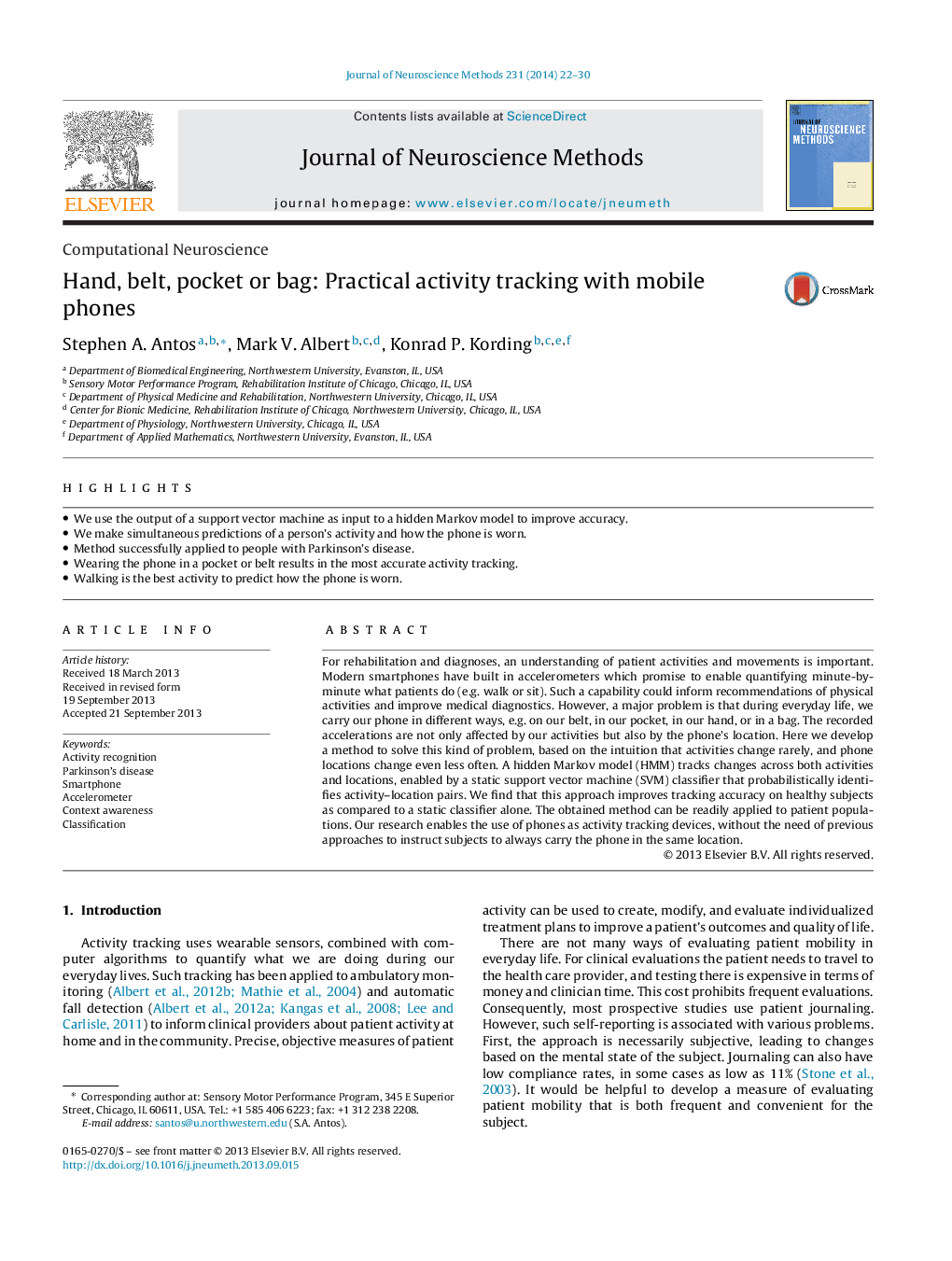| کد مقاله | کد نشریه | سال انتشار | مقاله انگلیسی | نسخه تمام متن |
|---|---|---|---|---|
| 4334964 | 1614638 | 2014 | 9 صفحه PDF | دانلود رایگان |
• We use the output of a support vector machine as input to a hidden Markov model to improve accuracy.
• We make simultaneous predictions of a person's activity and how the phone is worn.
• Method successfully applied to people with Parkinson's disease.
• Wearing the phone in a pocket or belt results in the most accurate activity tracking.
• Walking is the best activity to predict how the phone is worn.
For rehabilitation and diagnoses, an understanding of patient activities and movements is important. Modern smartphones have built in accelerometers which promise to enable quantifying minute-by-minute what patients do (e.g. walk or sit). Such a capability could inform recommendations of physical activities and improve medical diagnostics. However, a major problem is that during everyday life, we carry our phone in different ways, e.g. on our belt, in our pocket, in our hand, or in a bag. The recorded accelerations are not only affected by our activities but also by the phone's location. Here we develop a method to solve this kind of problem, based on the intuition that activities change rarely, and phone locations change even less often. A hidden Markov model (HMM) tracks changes across both activities and locations, enabled by a static support vector machine (SVM) classifier that probabilistically identifies activity–location pairs. We find that this approach improves tracking accuracy on healthy subjects as compared to a static classifier alone. The obtained method can be readily applied to patient populations. Our research enables the use of phones as activity tracking devices, without the need of previous approaches to instruct subjects to always carry the phone in the same location.
Journal: Journal of Neuroscience Methods - Volume 231, 15 July 2014, Pages 22–30
